In December 1804, the coronation of Napoleon I at Notre Dame de Paris marked the beginning of the Empire style. This tapestry is based on Napoleon’s official portrait, wearing his coronation robes, which according to a contemporary spectator made him look like “Caesar on a Roman coin.”
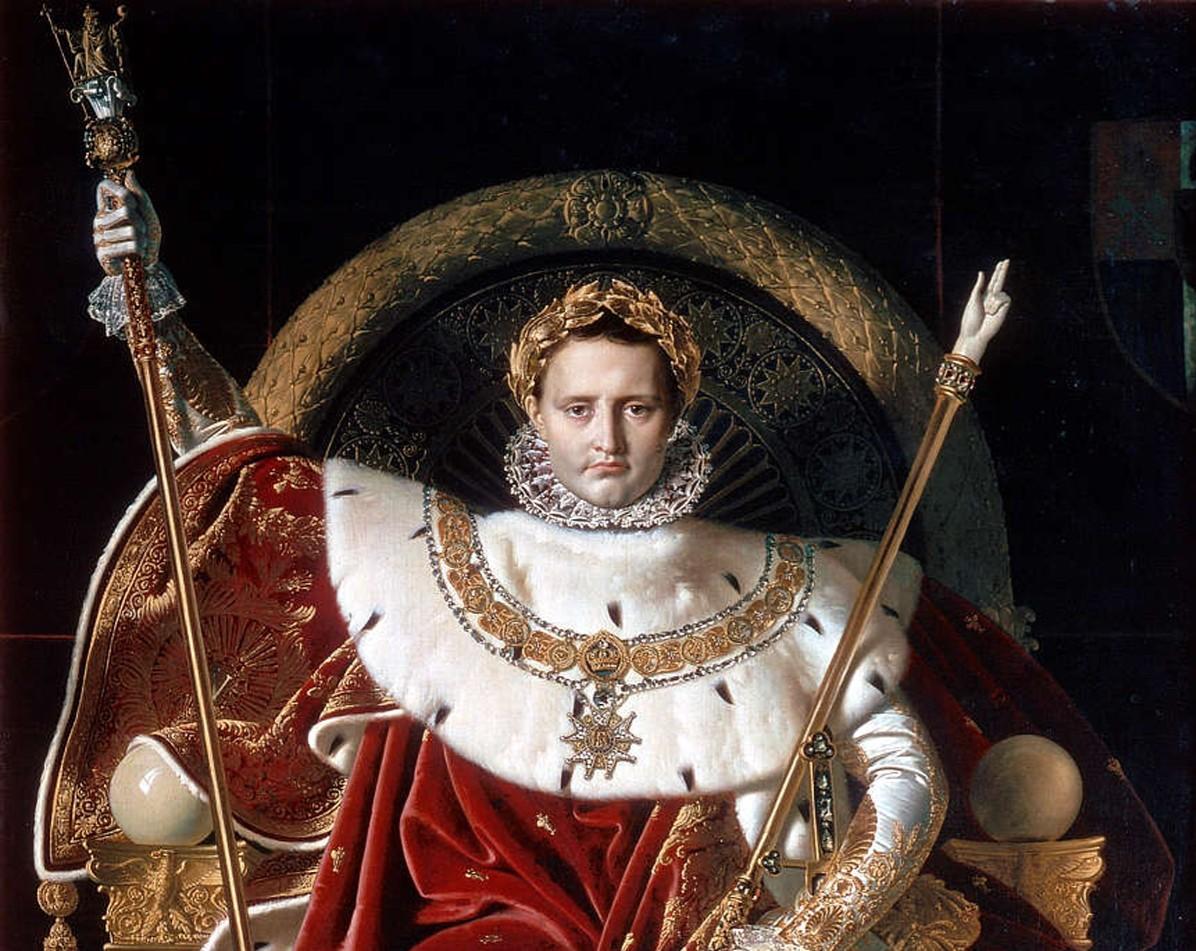
Jean-Auguste-Dominique Ingres, Napoleon on his Imperial Throne (detail), 1806.
The once-Emperor Napoleon used jewelry to secure his place in history. How, you might ask? Well, one must look at the painting within a painting by Louis Léopold Boilly’ of the great conquerer. In this work, Boilly reproduces Jacques-Louis David’s famous painting of Napoleon’s official coronation in its public viewing at the Louvre.
Boily's clever composition shows the stark contrast between the grandeur of Napoleon's court and his public. Napoleon’s grand coronation looks smaller in scale in Boilly’s painting, perhaps in order to give importance to the crowd, while highlighting the differences between the Emperor’s luxurious court and the French commoners. As opposed to the sumptuous imperial dresses and shining jewelry worn at the coronation, the artist paints the crowds in plain clothes, with only one woman wearing a simple coral necklace on the left.
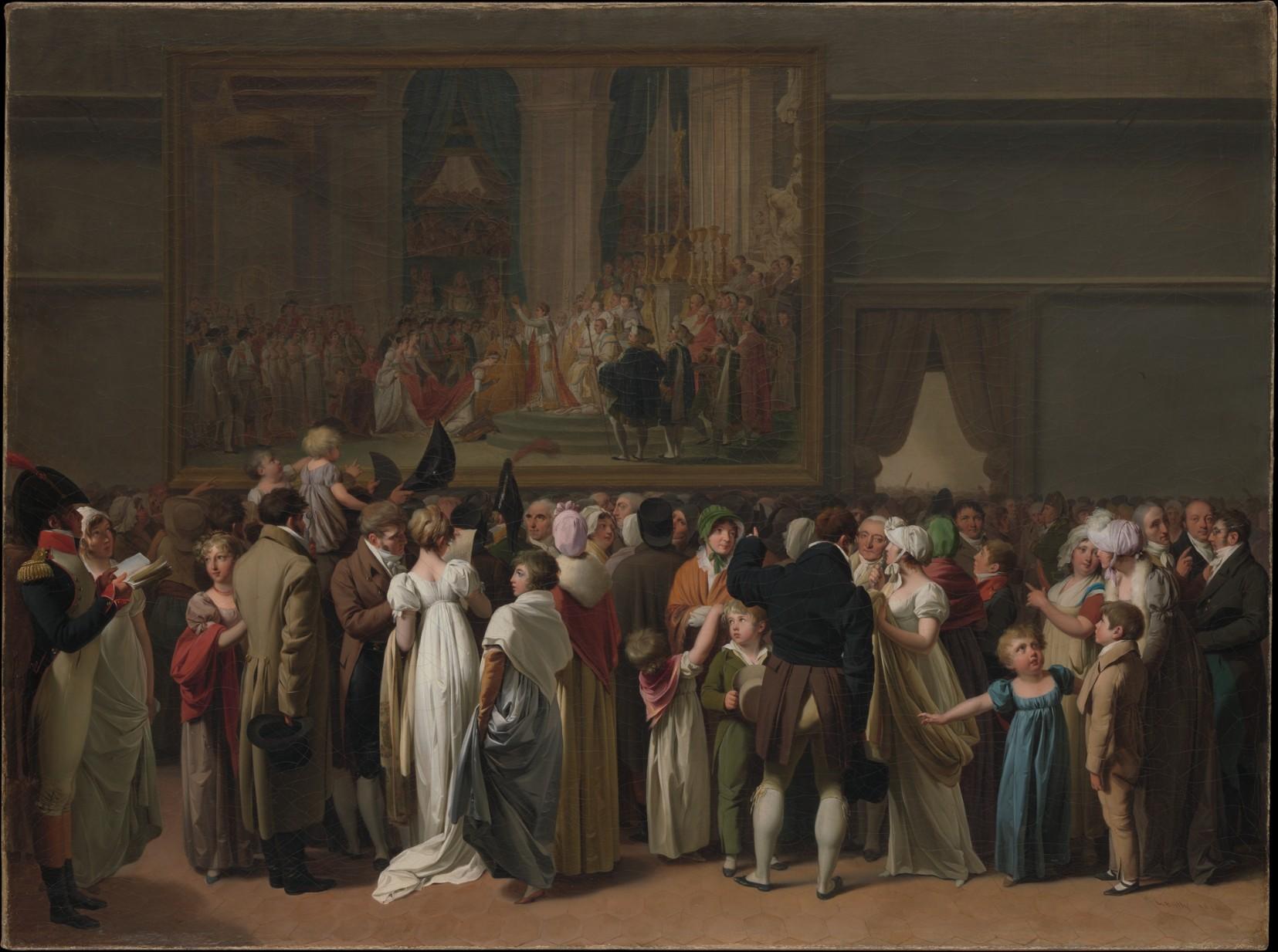
Louis Léopold Boilly, The Public Viewing David’s "Coronation" at the Louvre, 1810. Oil on canvas.
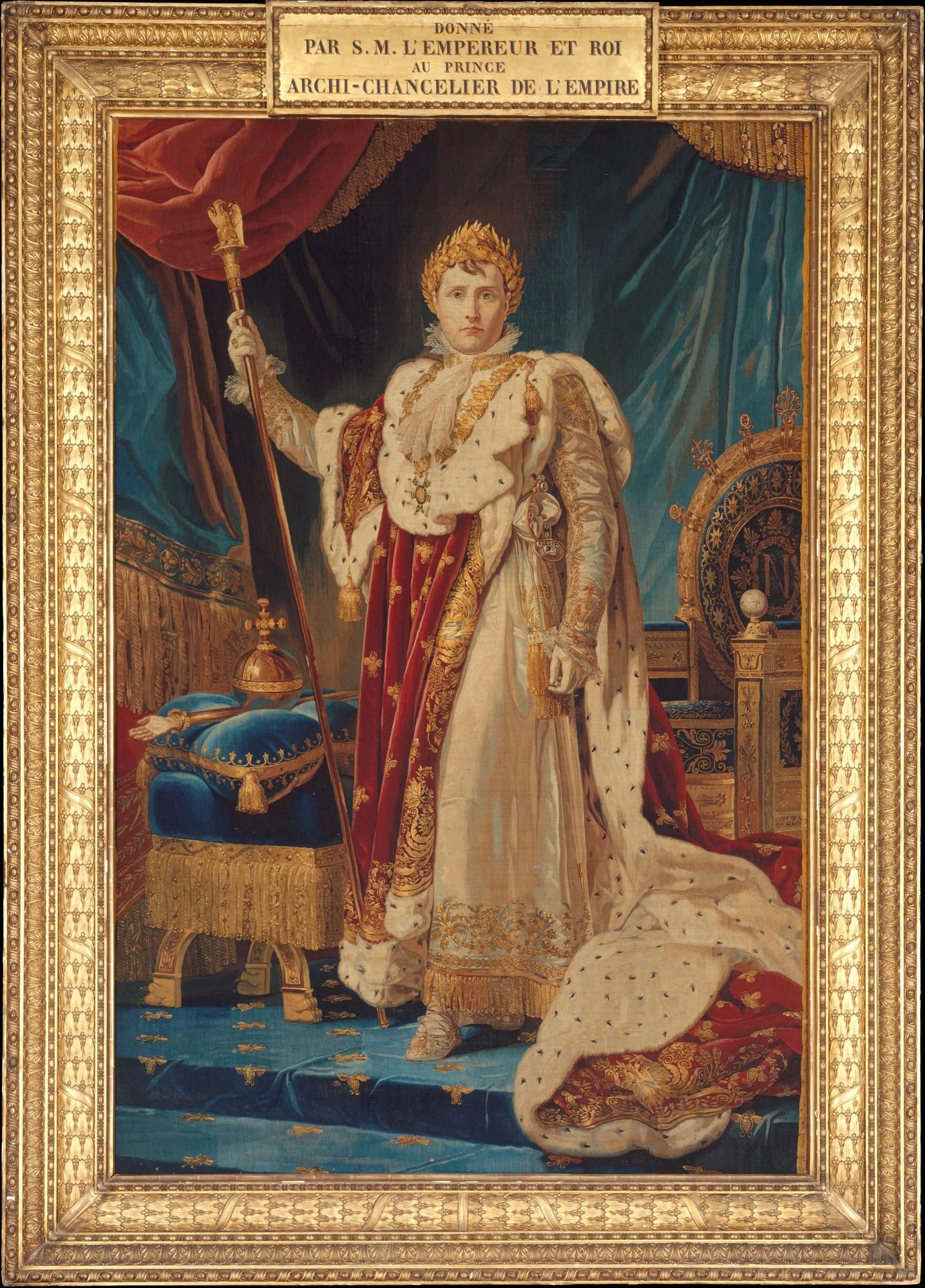
After a painting by François Gérard, Tapestry Portrait of Napoleon I, designed 1805, woven 1808–11.
Indeed, Napoleon’s cloak includes many neoclassical motifs borrowed from the Greeks and Romans: bees, oak, laurel leaves and palmettes embroidered in gold on crimson-red velvet. Following his desire to be associated with the greatest Roman Emperors, Napoleon wears a heavy golden laurel wreath by the French goldsmith Martin-Guillaume Biennais. Made of forty-four large gold laurel leaves and twelve smaller ones, it was unfortunately melted down during the restoration, except for a few leaves, one of which is preserved at the palace of Fontainebleau and others were sold at auction in recent years.
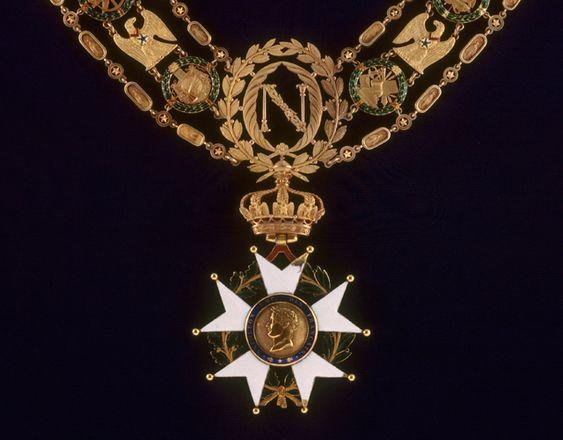
Martin-Guillaume Biennais, The Legion of Honor Collar. Solid gold, silver, enamel.
Biennais also made the collar of the Grand Master of the Legion of Honor, proudly hanging on Napoleon’s chest as a reward for civil and military services to the Nation. The star pendant shows the Emperor’s profile at the center, again associating him with Roman emperors as depicted on coins. The gold chain is made up of sixteen eagles between two fine rows composed of stars and bees in cartouches. The eagle is commonly identified with Zeus or Jupiter, chief among the Greco-Roman deities, as well as the standards of the Roman legions. A golden eagle can also be seen on top of the scepter on Napoleon’s right hand. Even his gold shoes were designed in imitation of Roman laced sandals. By echoing these classical Roman insignias, Napoleon is asserting his power and legitimizing his Empire, while distancing himself from the French Royal tradition.
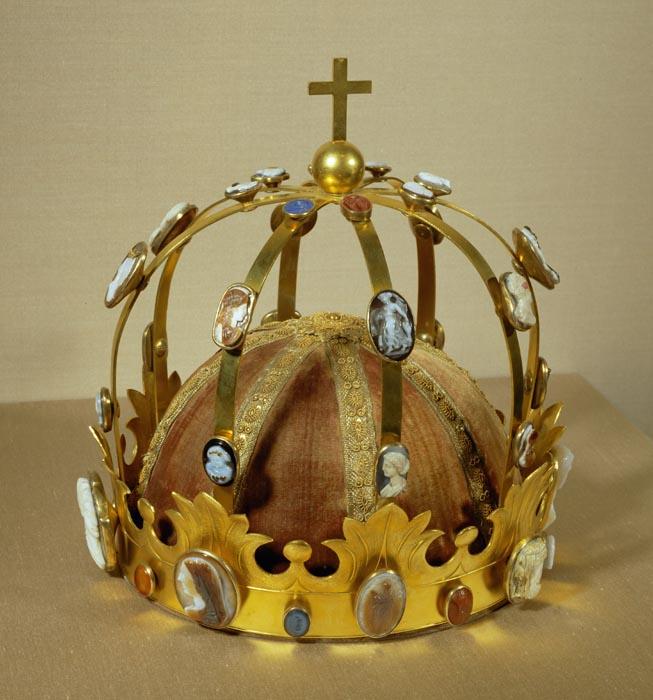
Martin-Guillaume Biennais, Crown inspired in Charlemagne, 1804. Silver gilt, cameos.
Another historic jewel that aligned Napoleon’s political ambitions with the Roman Empire was the portrait cameo carved in relief. Although there is no visual record of Napoleon wearing his Coronation crown, he ordered one studded with ancient cameos especially for the occasion. As court goldsmith, Biennais was in charge of designing the silver gilded crown with ancient cameos that associated Napoleon with past rulers, such as Alexander the Great and the infamous Roman Emperor Nero. These portrait cameos were apparently taken from a reliquary bust of Saint-Denis’ treasure by Vivant Denon, director of the Cabinet des Medailles and of the Louvre, the first museum of antiquities in France, then renamed Musée Napoléon.
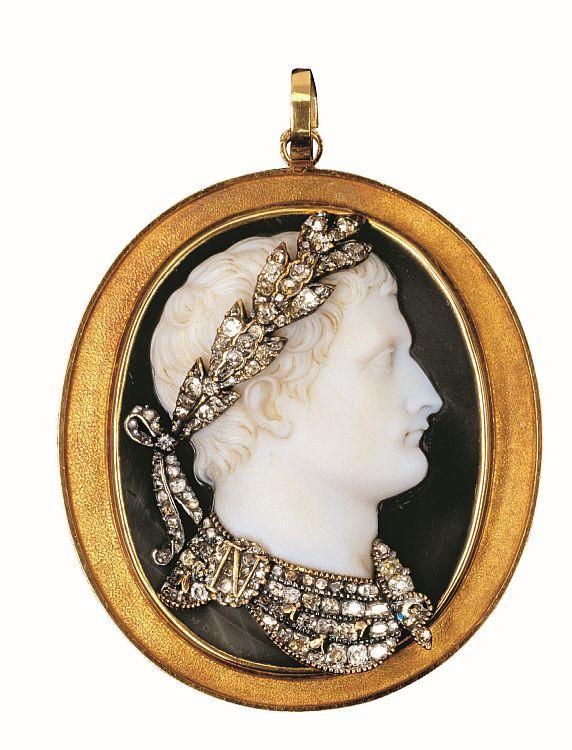
Nicolo Morelli, Cameo of Napoleon I, after 1804. Gold, onyx, diamonds.
Believing in the value of the cameo portrait as a political, propagandistic and diplomatic instrument, Napoleon commissioned many versions of his own portrait carved in stone, to disseminate his official image and that of his empire. An impressive onyx cameo of Napoleon, crowned with a laurel wreath of victory and shining in a Roman cloak set with diamonds, is part of a series of idealized profile portraits commissioned from the Italian engraver Nicolo Morelli in Rome. These cameos were often presented as diplomatic gifts and commemorative pieces.
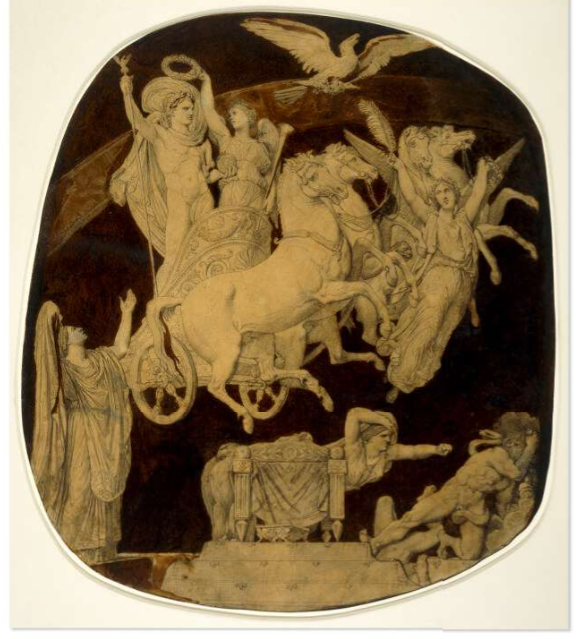
Jean-Auguste-Dominique Ingres, The Apotheosis of Napoleon I, design for an imperial cameo, 1859. Brown-wash pencil drawing.
In 1852, decades after the collapse of Napoleon’s Empire, his nephew Napoleon III was declared emperor of France. Like his uncle, he patronized the arts of gem engraving and in 1859 he commissioned a large cameo with the “Apotheosis of Napoleon I,” after a design painted by the French neoclassical artist and student of David, Jean-Auguste-Dominique Ingres. Napoleon I is being crowned and driven by Victory in a chariot to the Temple of Glory and Immortality, in his 'apotheosis' or elevation to divinity. It was difficult to find a large enough stone, so the final cameo, now at the Musée d'Orsay, was carved with the central group of figures only. Still, Napoleon III’s commission is clearly in alignment with Napoleon I’s ultimate ambition: to permanently wear the laurel wreath of victory, while the promise of glory and immortality was captured in stone.




























